Make the most of your time on a cruise stop with these ten awesome things to do in Stavanger in one day
Hello! I’m Piers and I’m from Guildford
This is the warm welcome I received at the Norwegian Canning Museum (Norsk Hermetikkmuseet). The story of how an English Egyptologist ended up as the curator of a museum celebrating the Norwegian fish canning industry is almost as compelling as that of the fluctuations in the fortunes of Stavanger.
Settled in the 8th Century, the Norwegian coastal city of Stavanger received a royal trading charter in the 15th Century. However, it remained relatively insignificant until the opening of the first fish-preserving plant in 1873.
From this date until the closure of the last cannery in 1982, 350 of these plants came and went. In 1972 alone, there were more than 70.
But the demise of the fish canning industry did not herald Stavanger’s descent into obscurity. With the discovery of Ekovosk, the North Sea’s largest oil field, in 1969, Stavanger’s fortunes changed once again. Sardine City became Oil Central.
But there is more to this pretty harbour city than fish and fuel. To help you make the most of your time there, here is my pick of the best things to do during one day in Stavanger.
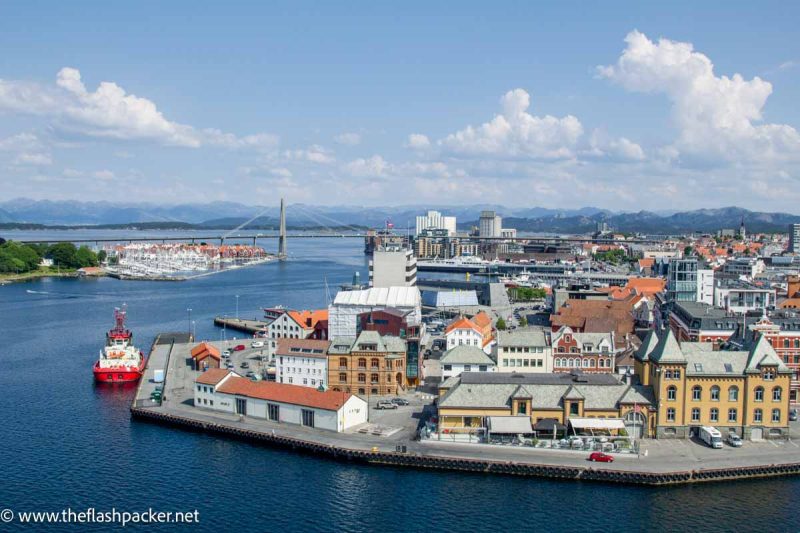
Some articles on this website contain affiliate links. This means that I may earn a small commission if you make a purchase through these links. As an Amazon Associate, I earn from qualifying purchases. Read the full disclosure here.
1. Visit The Norwegian Canning Museum (Norsk Hermetikkmuseet)
For the fishy tale of Stavanger’s past

Start your day in Stavanger at the Norwegian Canning Museum.
On the face of it, a fish canning museum may not be an obvious attraction. However, the combination of its multi-layered history and the boundless enthusiasm of Piers made this unforgettable.
The museum is housed in one of Stavanger’s former fish canning plants, the interior dating from 1880 – 1930. In addition to documenting the fish canning process, the museum reflects on societal change and technological innovation within the industry.
A large proportion of the workforce were women. In the late 19th century this represented a minor revolution, freeing them from the confines of the marital home.
As Piers put it:
They earned a little bit of money, had a gossip about what was going on in their street and, importantly, whose son should go out with whose daughter
The word ‘little’ is an important one. Compared with their salaried male co-workers, women were paid piecework rates.
In 1920, women brought in an annual salary of 400 NOK (£40) whilst the men earned up to 720 NOK (£72) a year. Those men who smoked the fish could earn over 2,000 NOK (£200) annually. A small fortune!
Smoking fish was equal parts art and skill, requiring three years of training. An additional perk was the two free bottles of beer a day that the men were allowed to drink in the workplace.
A quest for greater productivity fostered technological innovation.
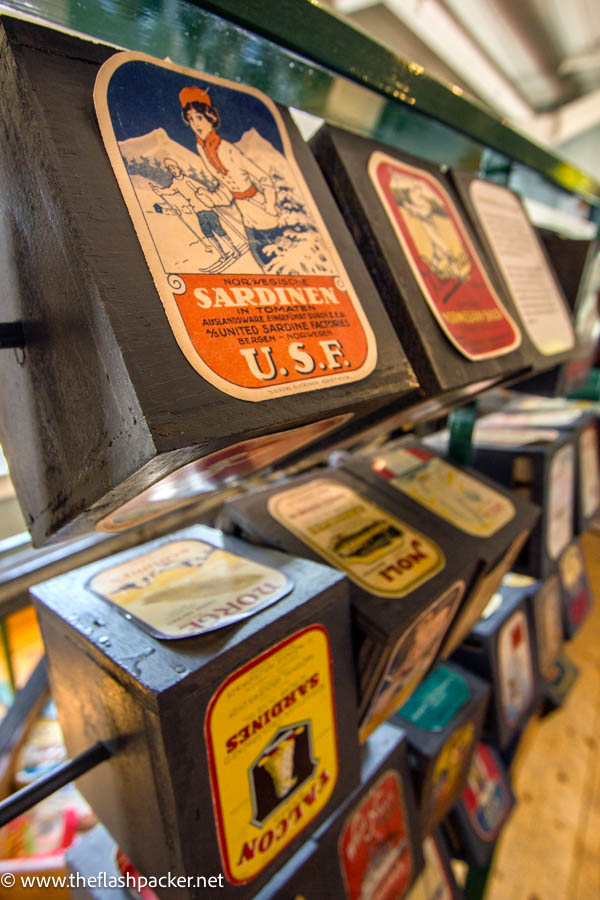
If you think your job is bad, spare a thought for the women working in the plant. Until the 1950s, they removed the fish heads one by one with a pair of scissors.
The introduction of a decapitation machine – a custom-made guillotine if you like – saved them from this task and significantly increased productivity to 4,000 fish per hour. With their nimble fingers, the women could pack 6,000 cans of sprats per day.
Not that it was a competition, but the men soldering the cans shut could not keep up, only able to seal 600 cans a day.
The canning plant had a problem.
After a shaky start, automated sealing machines appeared from 1960 onwards which were able to seal up to 10,000 cans per day.
2. Step onboard the Stavanger Maritime Museum
For all things nautical
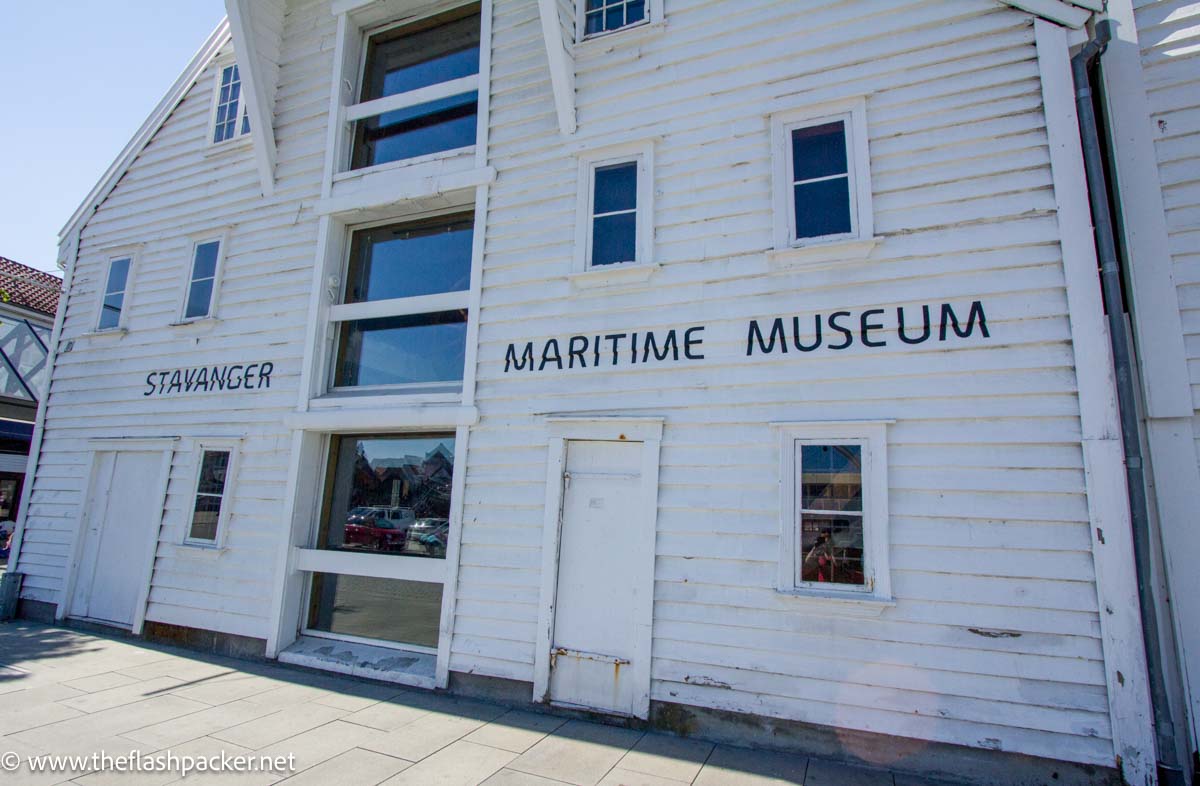
Stavanger’s Maritime Museum traces the city’s seafaring history over the last 200 years. It is housed in two former fish warehouses dating from the late 18th century that face Stavanger’s wharf.
Through its displays of all things nautical, it gives you a picture of what life was like for local merchants. These range from archaeological finds to reconstructions of shipping offices and stores.
Make sure that you check out the collection of old photos.
3. Wander around Gamle Stavanger (Old Stavanger)
To capture picture-postcard-perfect streets
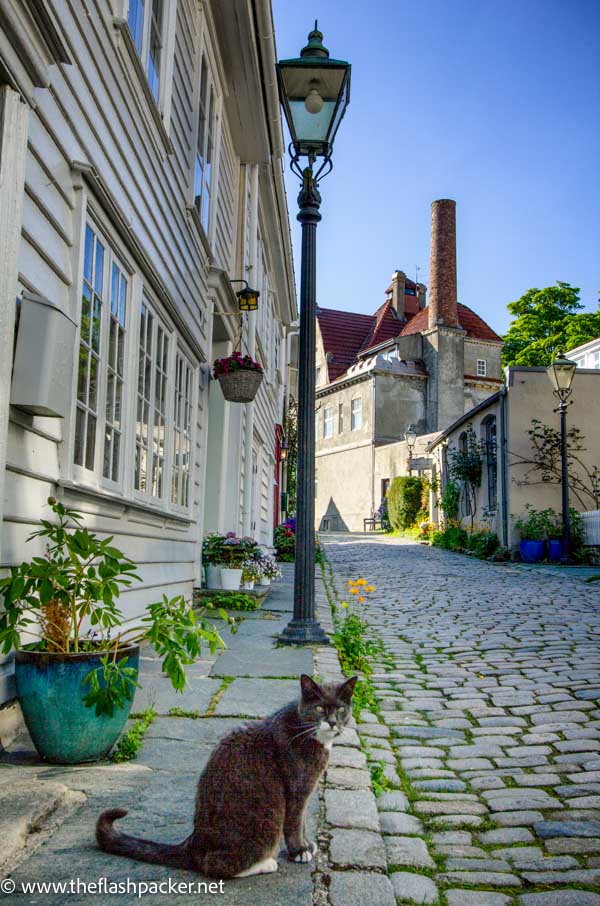
No day in Stavanger is complete without strolling around the streets of Gamle Stavanger.
Located on the western side of the harbour, Gamle Stavanger has the largest concentration of 19th-century wooden buildings in Northern Europe. It is Stavanger’s jewel in the crown.
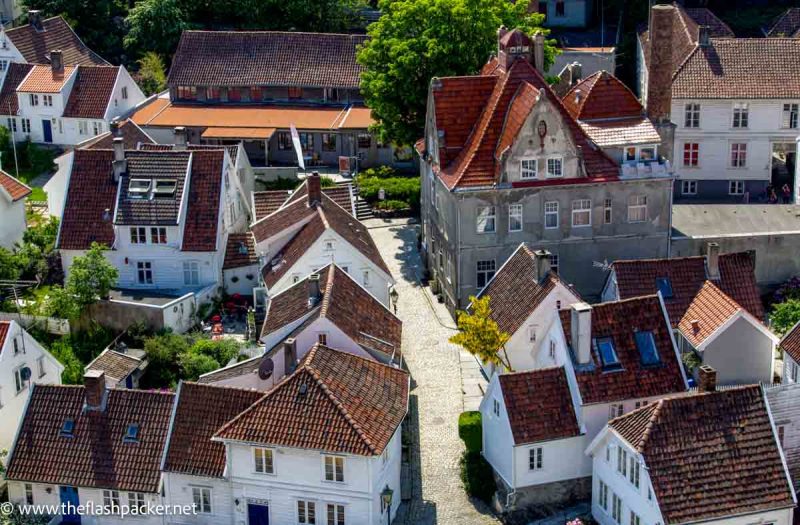
The 173 white-painted houses were the result of a boom between 1810 and 1870 when millions of herring made an appearance off the shores of the city. Stavanger flourished and new homes were built to accommodate local seafarers, craftsmen and cannery workers.
Wooden stores and warehouses flank the quayside, with clapboard houses rising in terraces along narrow, cobbled lanes behind them.
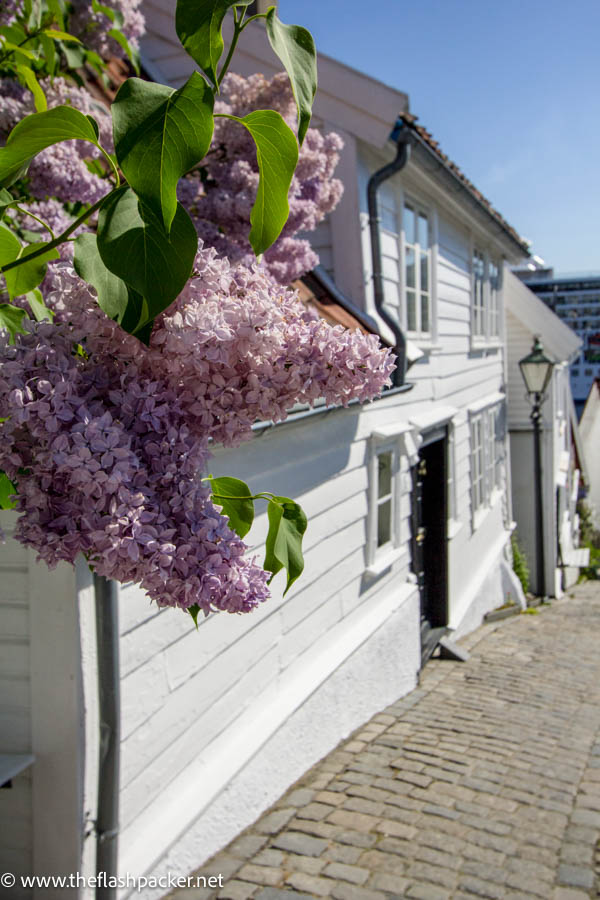
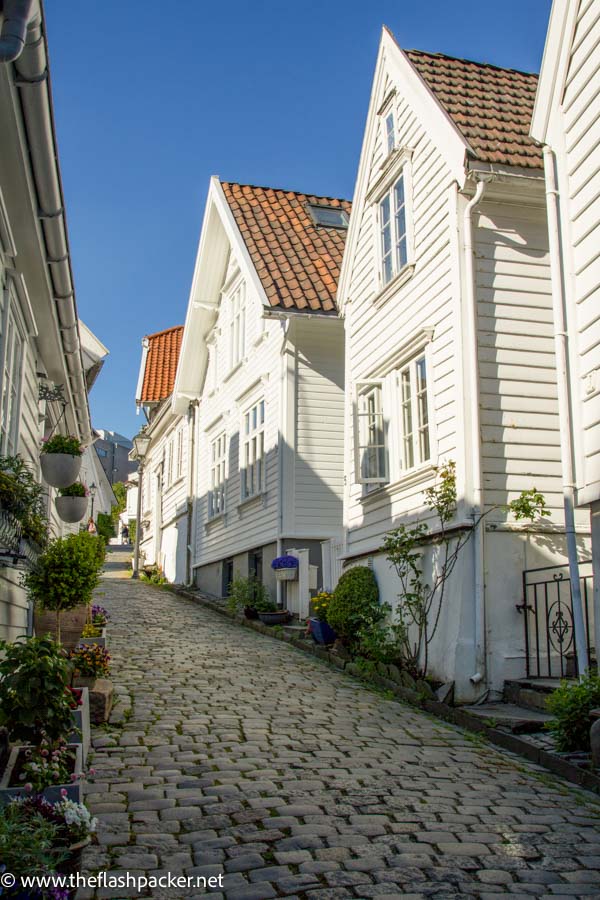
Although Gamle Stavanger is deservedly popular, it has not been blighted by tourism. Unlike too many other places, these properties are neither chi-chi galleries nor swanky cafes. Instead, this is a firmly residential area complete with hanging baskets, picket fences and tiny gardens.
4. Hunt for Antony Gormley statues
For a brush with the work of a contemporary British sculptor
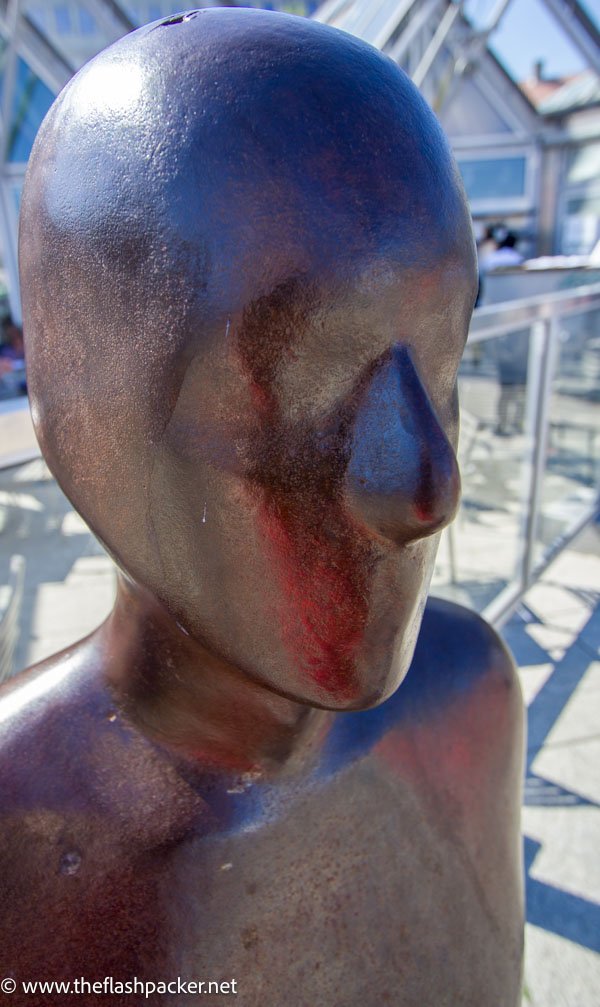
Stavanger commissioned Antony Gormley to create his “Broken Column” work. This series of 23 sculptures of blank-faced human figures, reportedly modelled on Gormley himself, aims to represent the many facets of the city.
The most accessible statue is beside Torget’s fish market at the head of the harbour.
5. Visit the Cathedral (Domkirke)
For a slice of medieval Stavanger
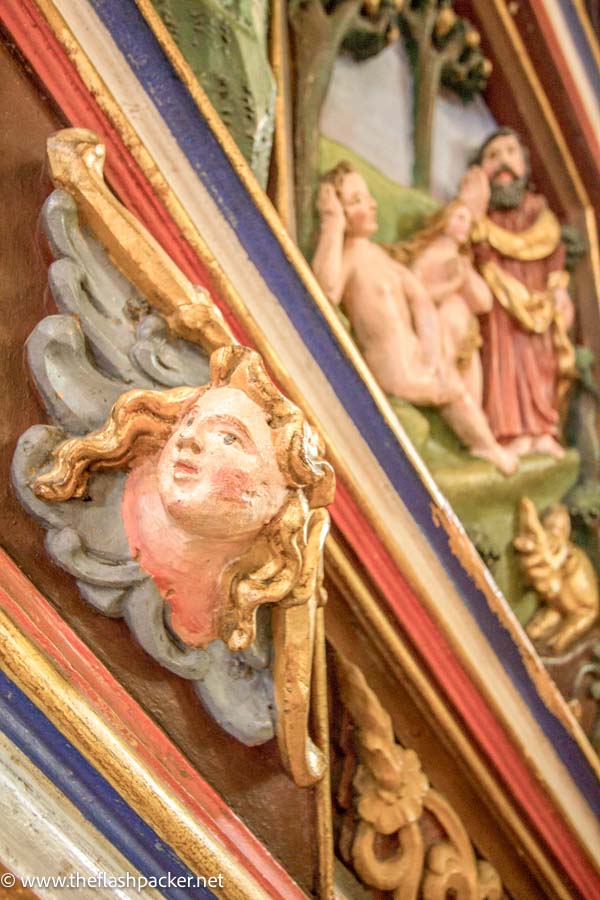
On the other side of the Torget, you will find Stavanger’s Cathedral, which has a strong British connection.
Built by English craftsmen in the early 12th century under the direction of Bishop Reinald of Winchester, it is dedicated to St. Swithun, who was also Bishop of Winchester for the last few years of his life. According to local tradition, Bishop Reinald brought an important relic to Stavanger, St. Swithun’s arm, which was removed to Denmark during the Reformation.
For you architectural boffins out there, it is a Romanesque church (think pointy-hat towers) with a later Gothic choir (think pointed windows and flowery tracery).
Its star turn is the richly decorated pulpit dating from the 17th century. Carved by the Scottish craftsman Andrew Smith, it spans biblical history with a generous sprinkling of cherubs and angels.
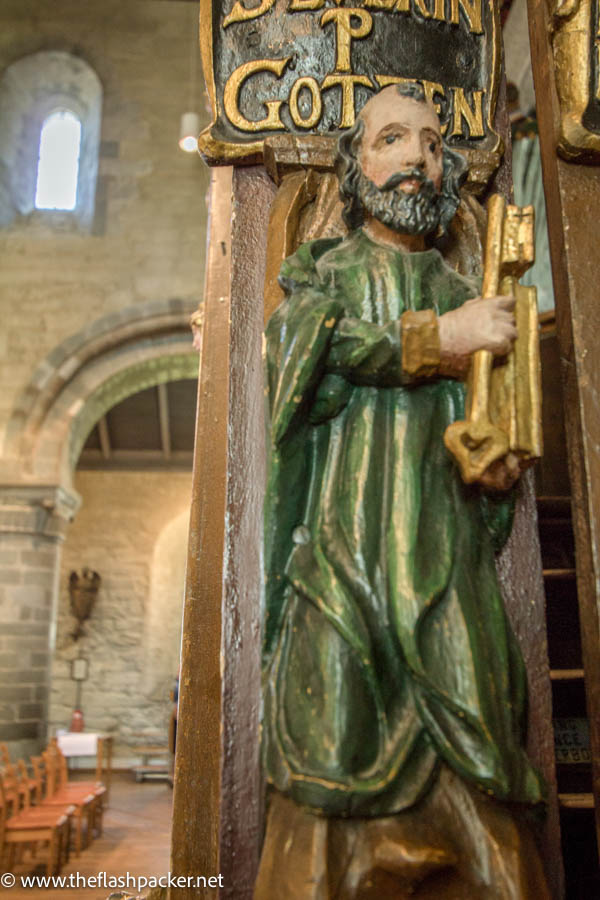
6. Visit Skagen
To blow your travel budget on a beer in a cool cafe
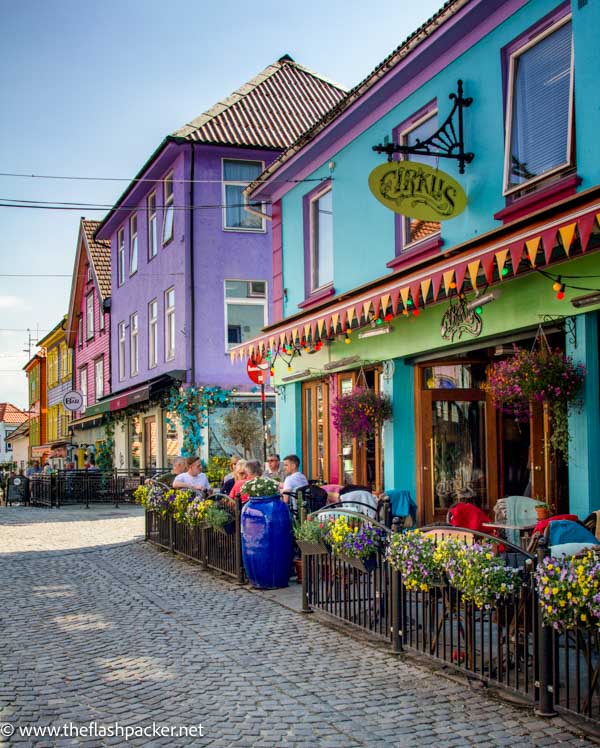
If you continue walking along the east side of the harbour you will reach Skagen. In contrast with the monochrome Gamle Stavanger, Skagen is a riot of colour.
Yellow meets green with a hint of pink; fuchsia, lime green and lavender mesh together in unexpected harmony. It shouldn’t work but it does.
Take your pick of the great cafes for a pit stop. A refreshing pint of local beer can be yours for a not-so-modest sum of money. Savour every last drop.
Skagen is centred around Øvre Holmegate.
7. Explore Stavanger’s street art
For cutting-edge urban art
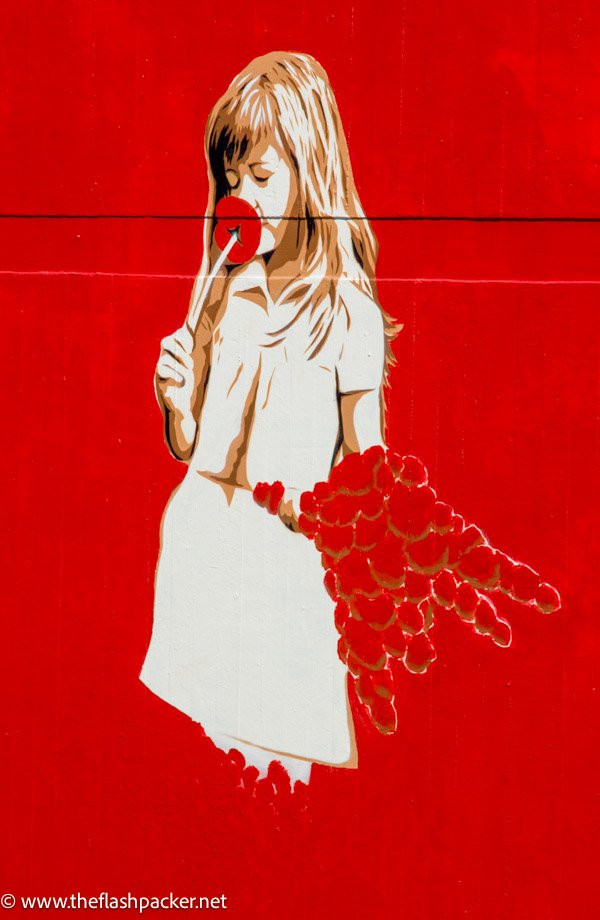
There are so many cool things to do in Stavanger but this must be near the top of the list.
In recent years, the street art scene in Stavanger has burgeoned. Each September, the city hosts the Nuart Festival, showcasing national and international street artists.
Stavanger’s street art can be found across the city but there is a cluster in and around Øvre Holmegate.
8. Fondle a drill bit at the Norwegian Petroleum Museum (Norsk Oljemuseum)
For a thoughtful exploration of Norway’s offshore oil industry
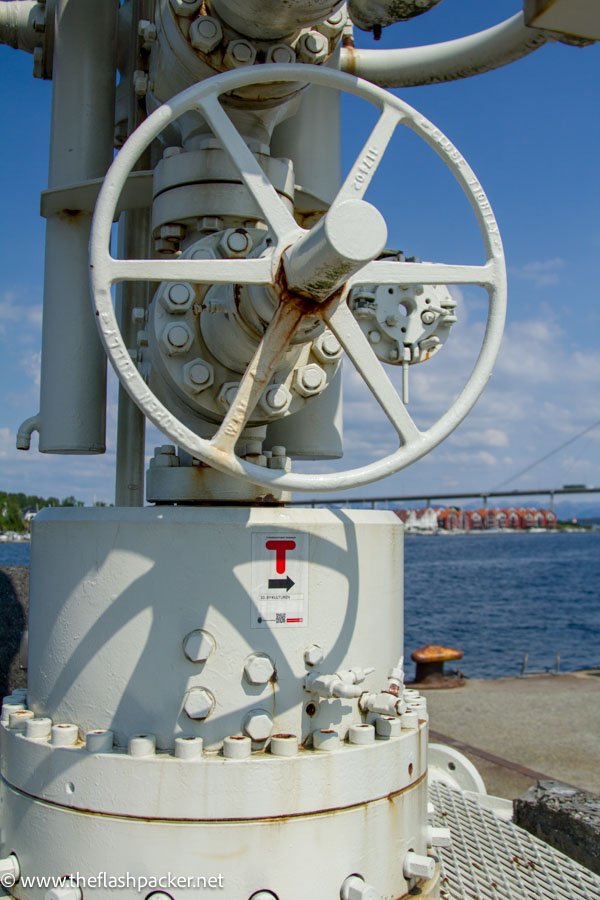
As improbable as it may seem, one of the best things to do in Stavanger is to discover more about the current source of the city’s wealth. Oil.
Located by the waterfront at the far end of Skagen, the superb Norwegian Petroleum Museum takes you on a geological, industrial, economic and environmental journey of oil exploration off Norway’s shores. Whilst visiting a museum dedicated to fossil fuel may not be an obvious addition to your 1-day Stavanger itinerary, you’ll be glad you went there.
Norway currently has 62 active oil fields and employs more than 200,000 people. The discovery of these oil reserves has made Norway a wealthy country, with an oil fund valued at over 8,000 billion NOK.
As well as absorbing facts, figures and philosophy, you get to embrace your inner child and play with stuff. Fondle an assortment of oil drill bits or pretend that you are in a helicopter en route to work. And this is likely to be the only opportunity that you will get to enter an oil rig and operate a drill.
Good for bringing out the 10-year-old boy – or girl – in all of us!
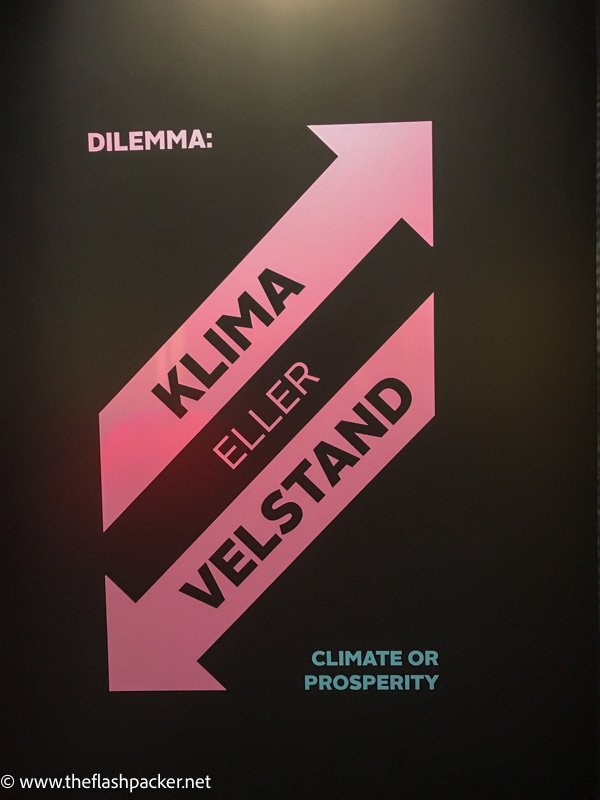
9. Be awestruck by Pulpit Rock
For one of the most spectacular views in Norway
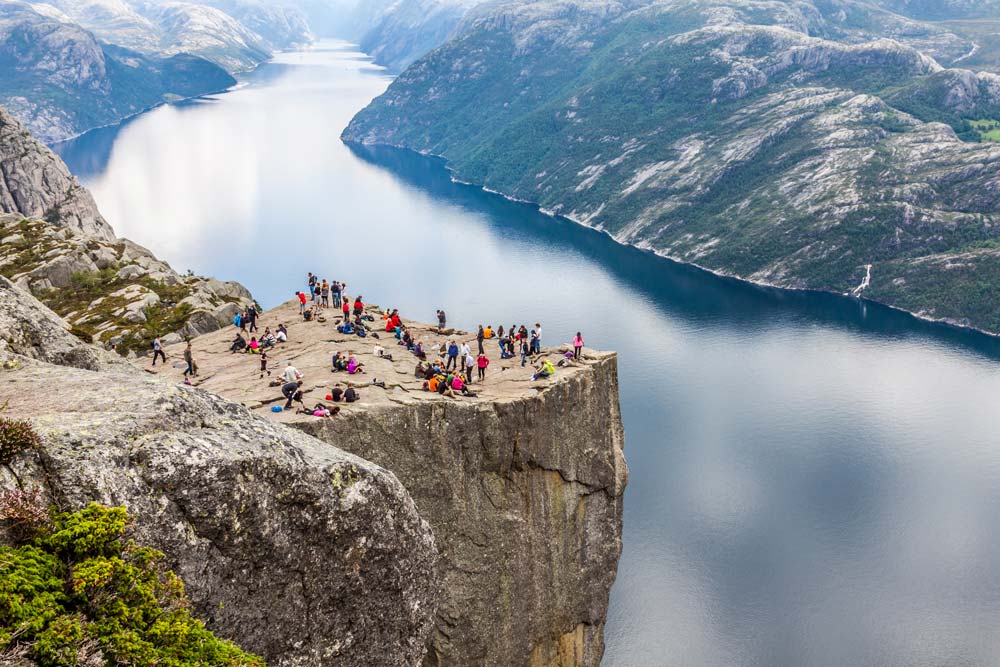
Towering over 600 meters above the majestic Lysefjord, Pulpit Rock, also known as Preikestolen or Prekestolen is a popular excursion from Stavanger.
Sculpted by nature during the last ice age in Europe – around 10,000 years ago – this natural rock formation, with a 25-meter squared plateau, was featured in Mission Impossible – Fallout and is considered one of the world’s most impressive viewpoints.
There are two ways to get to Pulpit Rock: gazing up at it from a Lysefjorden cruise, from a Norway Fjords cruise or hiking to the rock from Preikestolhytta.
Stavanger scenic cruise
If your Norway fjords cruise takes you along Lysefjorden you have this covered.
Several companies operate sightseeing boats departing from the main harbour in Stavanger for Pulpit Rock, with a scaled-down service outside of the peak summer months. As the trip takes a maximum of 3 hours and 30 minutes you will have plenty of time left to check out some of the other great things to do in Stavanger on your return.
>>> CLICK HERE TO BOOK YOUR SCENIC CRUISE
Pulpit Rock hike
Hiking to Pulpit Rock will take up most of your day in Stavanger. If you are in Stavanger as part of a cruise, your schedule may not accommodate an excursion of this length.
The hike to Pulpit Rock, one of the most popular in Norway, starts at the car park at Preikestolhytta. GoFjords offers a seasonal return bus transfer to the start of the trail.
Alternatively, in the summer you can catch a ferry to Tau and then a bus from Tau to the trailhead and back.
If you prefer someone else to take care of the arrangements for you and the services of a guide, book this organised excursion from Stavanger with free cancellation.
>>> CLICK HERE TO BOOK YOUR PULPIT ROCK EXCURSION
In Norwegian terms, this 5-mile hike with an elevation gain of 1200 feet is considered to be easy, although I feel that it veers towards moderate. The return hike takes around four hours.
However, your reward will be one of the world’s most spectacular vistas.
Make sure you bring clothing layers – although the sun may be making the water in Stavanger’s harbour sparkle it can be considerably colder at the higher elevation of the plateau of Pulpit Rock – and wear sturdy shoes. And don’t forget to bring water and snacks.
10. Honour Norway’s history at the Sverd i fjell (Swords in Rock) monument
To reflect on Norway’s history in scenic surroundings
Commemorating the victory of King Harald at the Battle of Hafrsfjord in the year 872, thereby uniting West Norway and Norway into one country, this striking monument overlooks the bay in Hafrsfjord in the outskirts of Stavanger. Although there is no conclusive evidence, it is thought that this battle took place in Hafrsfjord.
Made by Fritz Røed (1928-2002) and unveiled by King Olav in 1983, these three Viking bronze swords stand 33 feet tall and symbolise peace, unity and freedom.
How to get to Swords in rock from Stavanger
You’ll need to take a bus or taxi to reach Swords in Rock.
Take bus number 16 from bus stop 20 or 32. from Stavanger city centre and get off at bus stop Madlaleiren, From here it’s approximately 300 metres walk along Madlaveien. Return by the same bus number (direction Stavanger city centre).
The journey should take around 15 minutes.
How I spent a day in Stavanger on a Norway Fjords Cruise
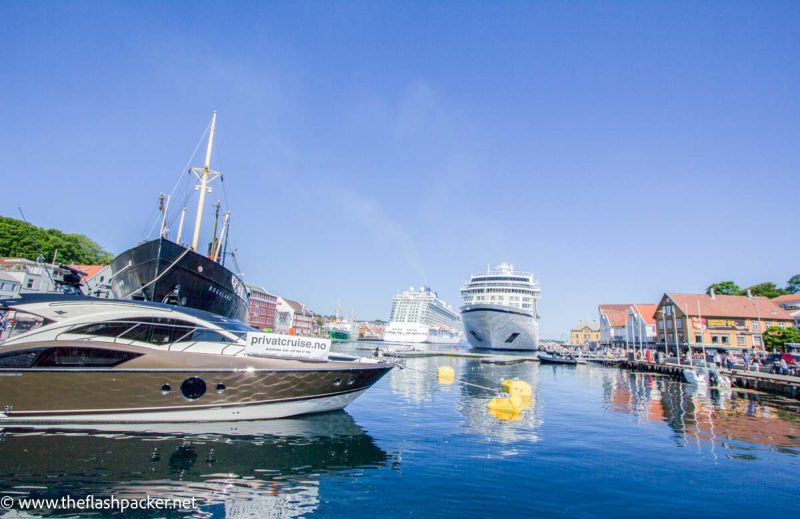
I sailed with P&O on HMV Britannia. We were in port from 9 am until 6 pm.
Getting to Stavanger from the cruise terminal is very easy. Ships park up in town and you simply walk off the ship.
Cruise ships berth at four different locations in Stavanger but as they are all in the heart of the city, they are equally convenient. In exceptional cases, ships may have to tender.
Packing a guidebook to help you explore the Norwegian ports of call independently is a wise move. I’m a big fan of Rick Steves and his guide to Scandinavian & Northern European cruise ports is packed full of useful information.
If you want to find out about the other stops on this Norway Fjords cruise, take a look at these guides:
- 10 Best Things to Do in Bergen in One Day
- Fabulous Flam Railway! Tips for Riding Norway’s Most Scenic Train
- Alesund, Norway: An Art Nouveau Walk in a Fairytale Town
Finally, if you are a cruise rookie, I also have advice on how to plan your first cruise and selecting cruise cabins, including single staterooms for those cruising solo.
Happy travels!

About Bridget
Bridget Coleman has been a passionate traveller for more than 30 years. She has visited 70+ countries, most as a solo traveller.
Articles on this site reflect her first-hand experiences.
To get in touch, email her at hello@theflashpacker.net or follow her on social media.

Just watching State of Happiness about Stavanger on television. My grandad Gustave Gudmonsen came from Stavanger. Always wondered what Norway was like. Awesome.
Same here! And loving it. Although Stavanger was considerably sunnier when I visited :)